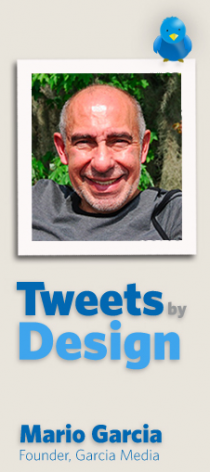TAKEAWAY: If you are a print editor, you must watch how the story evolves carefully, follow its trajectory in the digital media, then look for that invisible angle to play up in the printed edition. The trip of President Clinton to North Korea, to rescue two American journalists, presents a good case for discussion PLUS: Pure Design: how to handle “finger reading” type of information.
When the invisible should be the lead
I often refer to the importance of looking for what I call the “invisible” part of the story.
When referring to the path of the story—-how a story travels in this 24/7 multi platform environment—-I like to recommend to print editors that they try hard to find that element of the story that can make the printed story come alive with new information, or a different angle.
So, while reading newspaper coverage of President Bill Clinton’s humanitarian mission to North Korea, where he met Kim Jong-il and managed to rescue American journalists Laura Ling and Euna Lee, I was curious to find a hidden fact in the story as I read it in The New York Times’ online editionhttp://global.nytimes.com/:
Somehow, this may explain the success of the mission. This adds a human dimension to the story—-not to mention what it may say about Mr. Kim, a leader that the west always looks at with great suspicion. The man may have a heart, after all, or perhaps a sense of gratitude.
I was quite suprised that , in the case, an important point of the story was buried. Even commentators seemed to have ignored this.
IF I were a newspaper editor, dealing with a second day story on the first day, I would have taken this bit of information, elaborated on it and perhaps offer it higher in the hierarchy of the text.
Instead, most of the newspapers I accessed, dealt with the straight line of the story: “Clinton brings the American journalists home”, which, of course, we already knew for many hours by reading online reports, and watching live television coverage of the event.
The New York Times did get it right, however, with this headline: In Release of Journalists, Both Clintons Had Key Roles
Case Study: TV Guide
One of the most challenging aspects of a design could be how to make long lists—-what I refer to as “finger reading”——easy to read, easy to navigate and, of course, attractive.
In this Pure Design installment, we show a case study of TV Guide, and how the designer approached the lists as well as the pages in between.
Jacky was a hit on Sunday

Jacky captivated many of you, so he will be back next Sunday
Frank Deville’s dog, Jacky, made a cameo appearance in this blog yesterday (see above), and we joked that the Luxembourg-based pooch was an avid reader of the German newspaper, Bild Am Sonntag. Well, many of you wrote to say that you found this dog exceptionally cute and smart. So, by popular demand, Jacky will be back Sunday to tell us which Bild Am Sonntag story he sniffed as the best. Stay tuned for more of Jacky, who apparently prefers his newspaper “in print” and definitely NOT online.
Download entire first section of Pure Design: Words
Now that I have fully presented the first of six sections of Pure Design on TheMarioBlog, I am offering the entire initial section, “Words,” available for download—all 33 pages of it. This may be useful for those of you saving or printing out Pure Design and will be done following each of the remaining sections. At the end of our journey through words, type, layout, color, pictures, and process, I will publish the entirety of Pure Design in one file.

Follow me at www.twitter.com/tweetsbydesign
Follow the Marios

Two Marios. Two Views.
Follow Mario Jr. and his blog about media analysis, web design and assorted topics related to the current state of our industry.
http://garciainteractive.com/
Visit Mario Sr. daily here, or through TweetsByDesign (www.twitter.com/tweetsbydesign)
In Spanish daily: The Rodrigo Fino blog
:
To read TheRodrigoFino blog, in Spanish, go:
https://garciamedia.com/latinamerica/blog/
TheMarioBlog posting #325